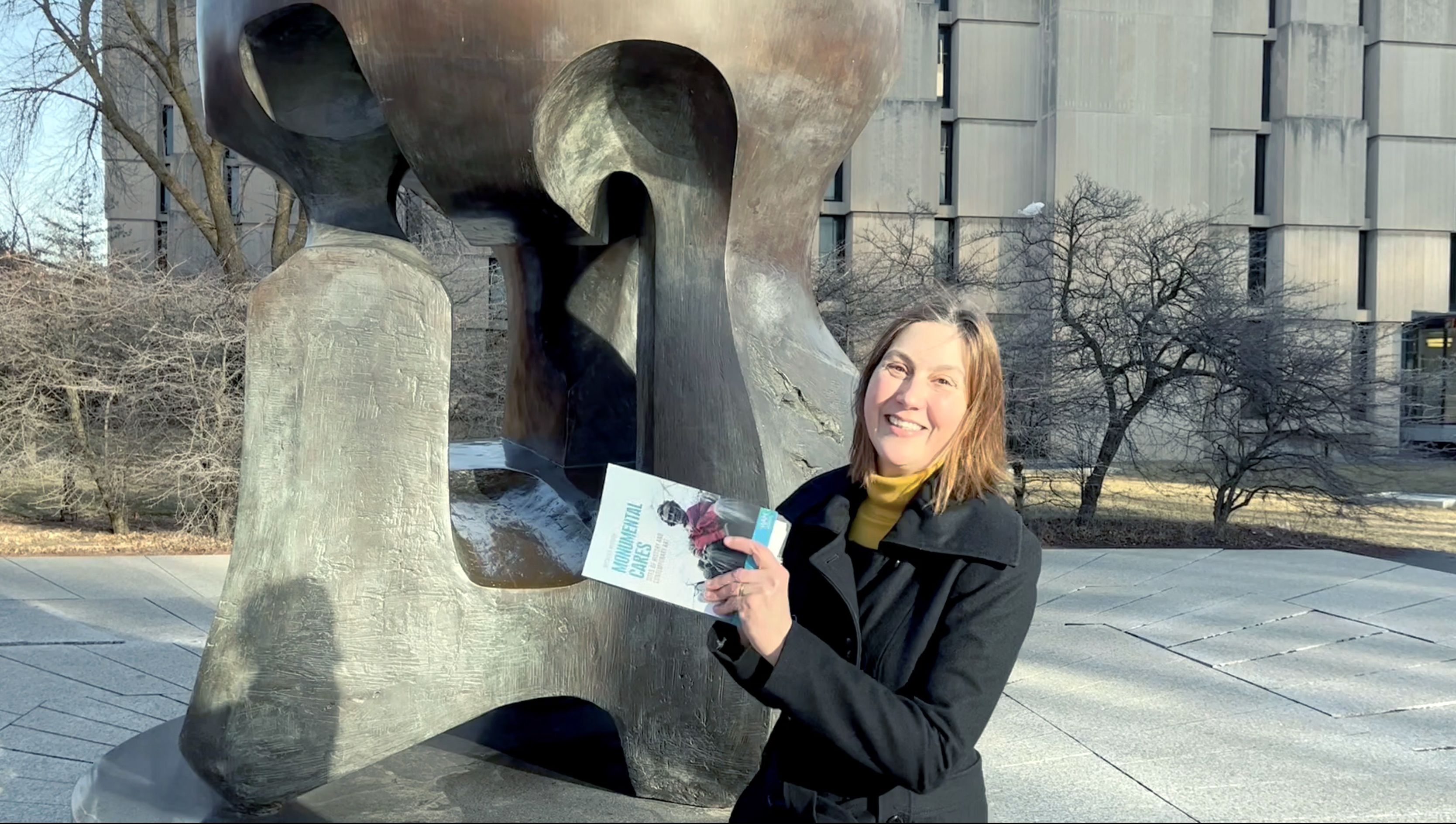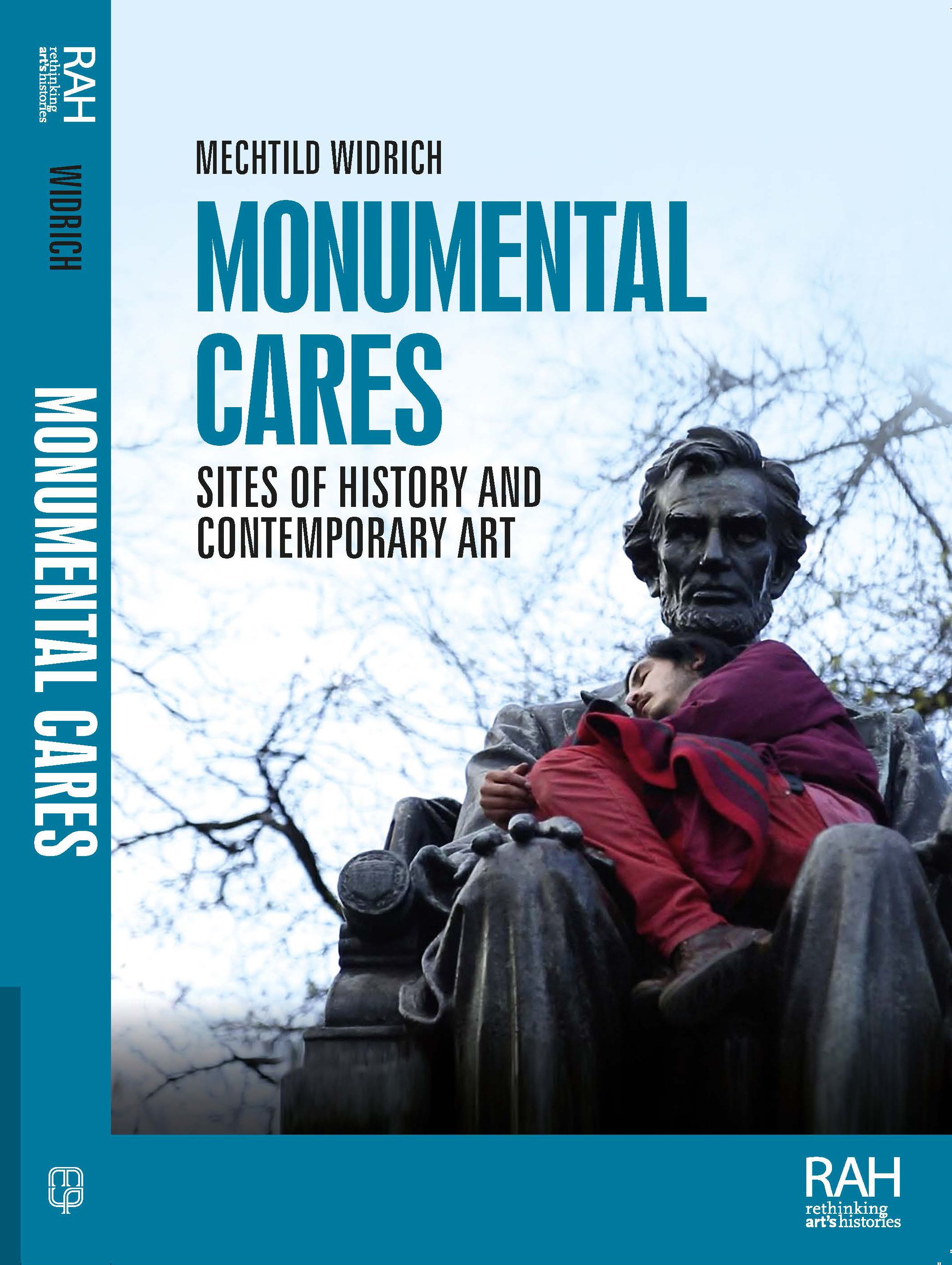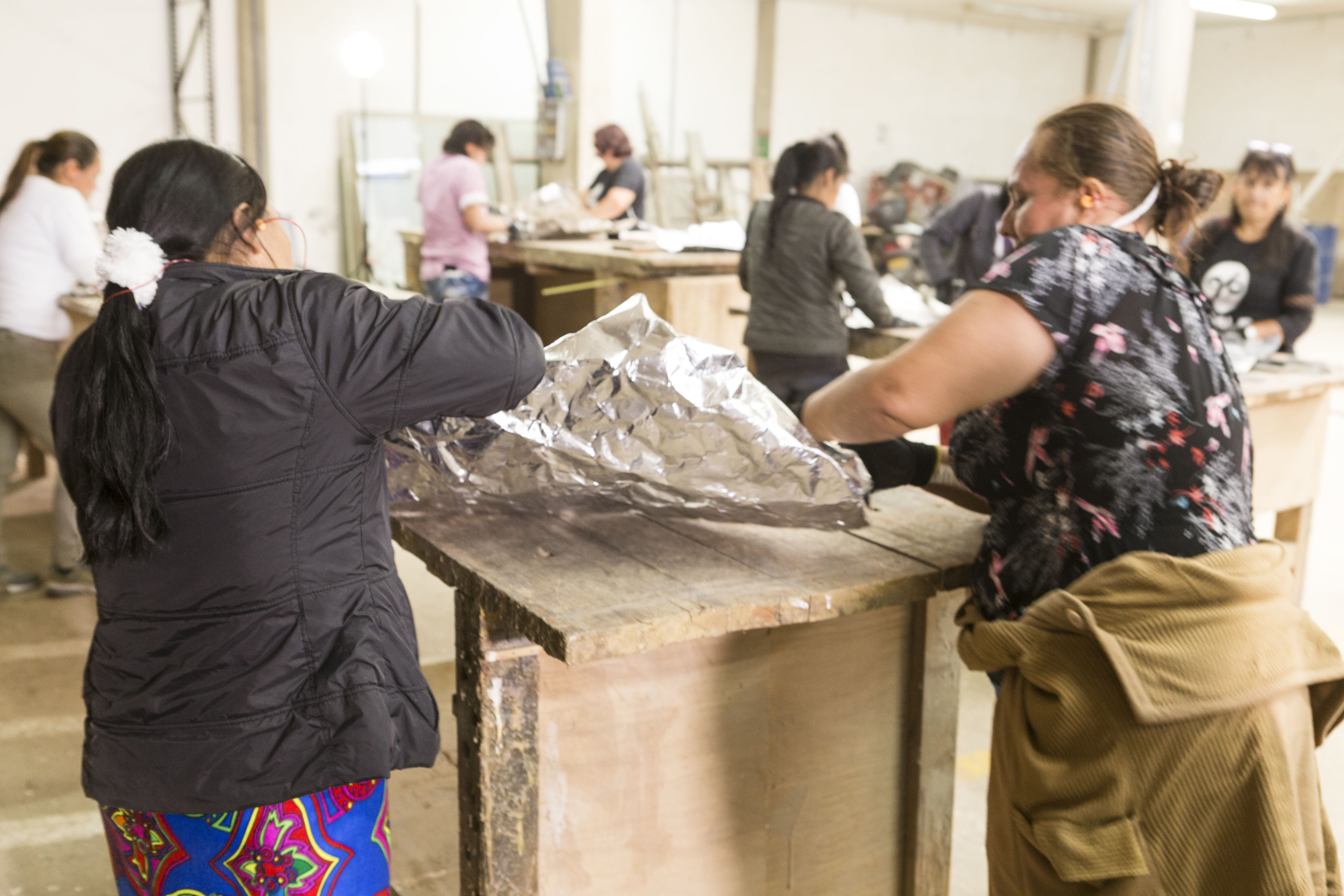More Than A Statue: Mechtild Widrich’s Monumental Cares

Mechtild Wildrich poses with her new book in front of Henry Moore's Nuclear Energy (installed 1967) at the University of Chicago Campus. Photograph by Andrei Pop.
Mechtild Wildrich poses with her new book in front of Henry Moore's Nuclear Energy (installed 1967) at the University of Chicago Campus. Photograph by Andrei Pop.
by Sophie Lucido Johnson (MFA 2017)
If you were to stroll through the parks that flank the perimeter of the Art Institute of Chicago, you’d see dozens of public artworks and monuments—The Chicago Stock Exchange archway just outside the museum; the abstract sculptural fountain to commemorate the bicentennial of American independence on Columbus Drive; a bust of renowned orchestra conductor Sir Georg Solti on Randolph Street, across from the Chicago Symphony Center—and those are a small fraction of the more than 500 monumental sculptures and commemorative plaques in Chicago’s public spaces. School of the Art Institute of Chicago (SAIC) Art History, Theory, and Criticism Professor Mechtild Widrich notices and cares about all of them—and she thinks you should, too.
Widrich, who has taught at SAIC since 2015, has spent the past seven years researching her new book, Monumental Cares: Sites of History and Contemporary Art, which was published by Manchester University Press in January. The book follows case studies of monuments all over the globe, and implores readers to see and understand their significance.
Widrich wants people to know that monuments are deeply political. “Authoritarian monuments shut down our access to history, and we need to care for this access,” she said.

The cover of the book, featuring an image from Emilio Rojas' He Who Writes History Has No Memory.
The cover of the book, featuring an image from Emilio Rojas' He Who Writes History Has No Memory.
Debates about monuments have always existed, but they’ve been particularly fierce in the past decade, as activists urge local governments to remove monuments to Confederate leaders and other historical figures with racist histories. Widrich is concerned with how we might be able to design better monuments that represent issues affecting the world today, from global migration to climate change.
“I am making the case for a new ethics of care in public art,” she said.
Widrich said she was inspired to write the book both by the current monument debate, and her previous work on new forms of commemoration, which she calls “performative monuments.” For example, Widrich ends her book with the exploration of a work by Colombian artist Doris Salcedo: she had firearms surrendered by the Revolutionary Armed Forces of Colombia melted down. Then, in collaboration with women who had suffered sexual abuse in the decades-long conflict, hammered them into sheet metal, used them to design and line the floor of an exhibition and memorial space called Fragmentos in Bogotá.
“The cathartic acts of the women hammering the metal makes the work of memory and commemoration emphatically physical.” Widrich said. “Monuments show what a society cares to remember and what a society cares to discuss in public space. Many artists and activists want to take history back, and public space. They want to redefine sites of history, creating a more complex, plural picture of the world we live in.”

Women participating in Doris Salcedo’s project, Fragmentos, Bogotá, Colombia. Photo: Juan Fernando Castro. Courtesy of Fragmentos, Espacio de Arte y Memoria / Ministry of Culture of Colombia.
Women participating in Doris Salcedo’s project, Fragmentos, Bogotá, Colombia. Photo: Juan Fernando Castro. Courtesy of Fragmentos, Espacio de Arte y Memoria / Ministry of Culture of Colombia.
Widrich has been teaching both undergraduate and graduate courses related to monuments for several years, including a class called The Making and Unmaking of Monuments. She will have a new graduate course in the fall, also titled Monumental Cares, that will use examples from her book. A key takeaway Widrich hopes readers will get from the book is that, as she put it, “Public space is never neutral.”
“Without visible signs of what we care about, the past cannot help us fight for a better future. There is no future without a clear view of our past—and both are plural, the work of diverse people and narratives,” she said.
Now that the book is out and making waves, Widrich wants to focus on a particular Chicago monument that is currently under discussion for its problematic representation of Native Americans: Ivan Mestrovic’s equestrian statues, the Bowman and Spearman, on Michigan Avenue. Widrich has been looking into the context that made it possible for a European sculptor to be commissioned to showcase “American history.”
Widrich pondered, “How do we make audiences understand that those represented will have to have a say in the decisions around the statues?” And that’s the ethics of care in public art that Widrich is hoping to bring to the forefront: A statue is never just a statue.
